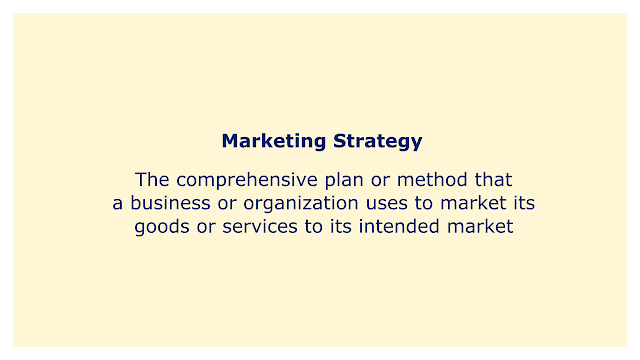 |
| Image: Moneybestpal.com |
The term "marketing strategy" refers to the comprehensive plan or method that a business or organization uses to market its goods or services to its intended market. It entails a set of actions and choices made with the intention of attaining certain marketing objectives, such as raising sales, enhancing brand recognition, or gaining market share.
Several essential elements go into creating a successful marketing strategy, including market research, target audience identification, branding, price, product development, distribution, and promotional activities. To the success of the overall marketing plan, each of these components is crucial.
Any marketing strategy must start with market research since it enables a business to comprehend its target market and pinpoint their wants and needs. With this data, targeted marketing messages and strategies are created that appeal to the audience and increase interaction and sales.
The process of identifying a target audience entails specifying the precise demographic, geographic, and psychographic traits of the group that a business wants to focus its marketing efforts on. Age, gender, income, education, lifestyle, interests, and behavioral tendencies are a few examples of these.
Another important component of a marketing plan is branding, which aids in giving a company and its goods or services a unique identity and image. As part of this, you must create a distinctive brand name, logo, and visual identity. You also need to establish a unified brand voice and messaging that is used across all marketing platforms.
Price plays a significant role in marketing strategy because it has an impact on how consumers perceive the value of a good or service and can change their behavior. The best price point for a company's goods or services must be determined after taking into account a variety of pricing strategies, including cost-plus pricing, value-based pricing, and penetration pricing.
Product development entails producing goods or services that satisfy the demands and preferences of the intended market. Doing market research, finding unmet requirements, and creating innovative goods and services that provide clients with special advantages and value are all part of this.
The different ways a business can reach clients to deliver goods or services are referred to as distribution. Physical retail stores, online marketplaces, and direct-to-consumer platforms like e-commerce websites or subscription services are all included in this.
Finally, it's crucial to increase awareness among the target audience and encourage interaction through promotional activities like public relations, social media marketing, and advertising. To ensure that the proper audience receives the right message at the appropriate moment, these actions must be carefully planned and carried out.
